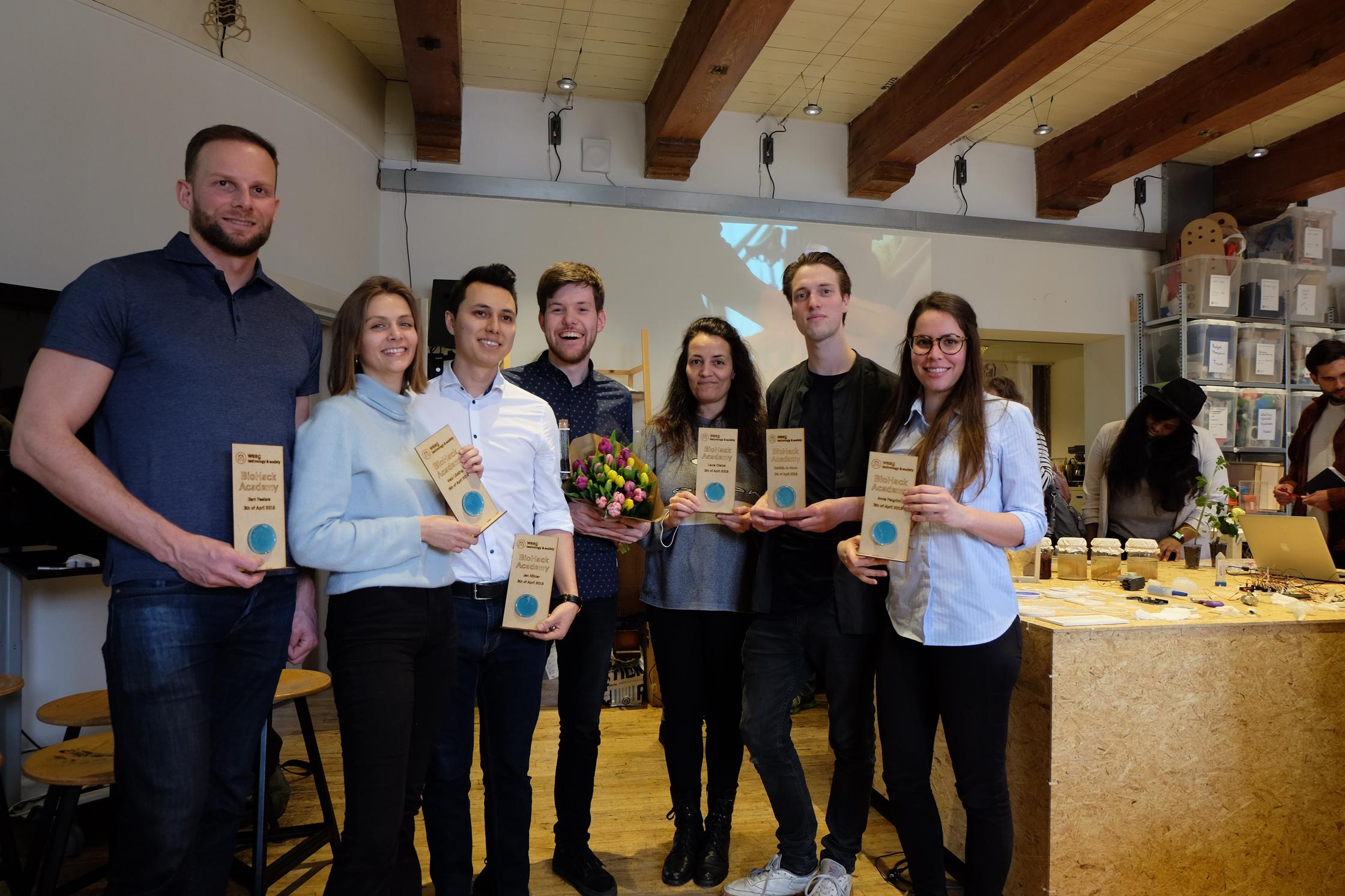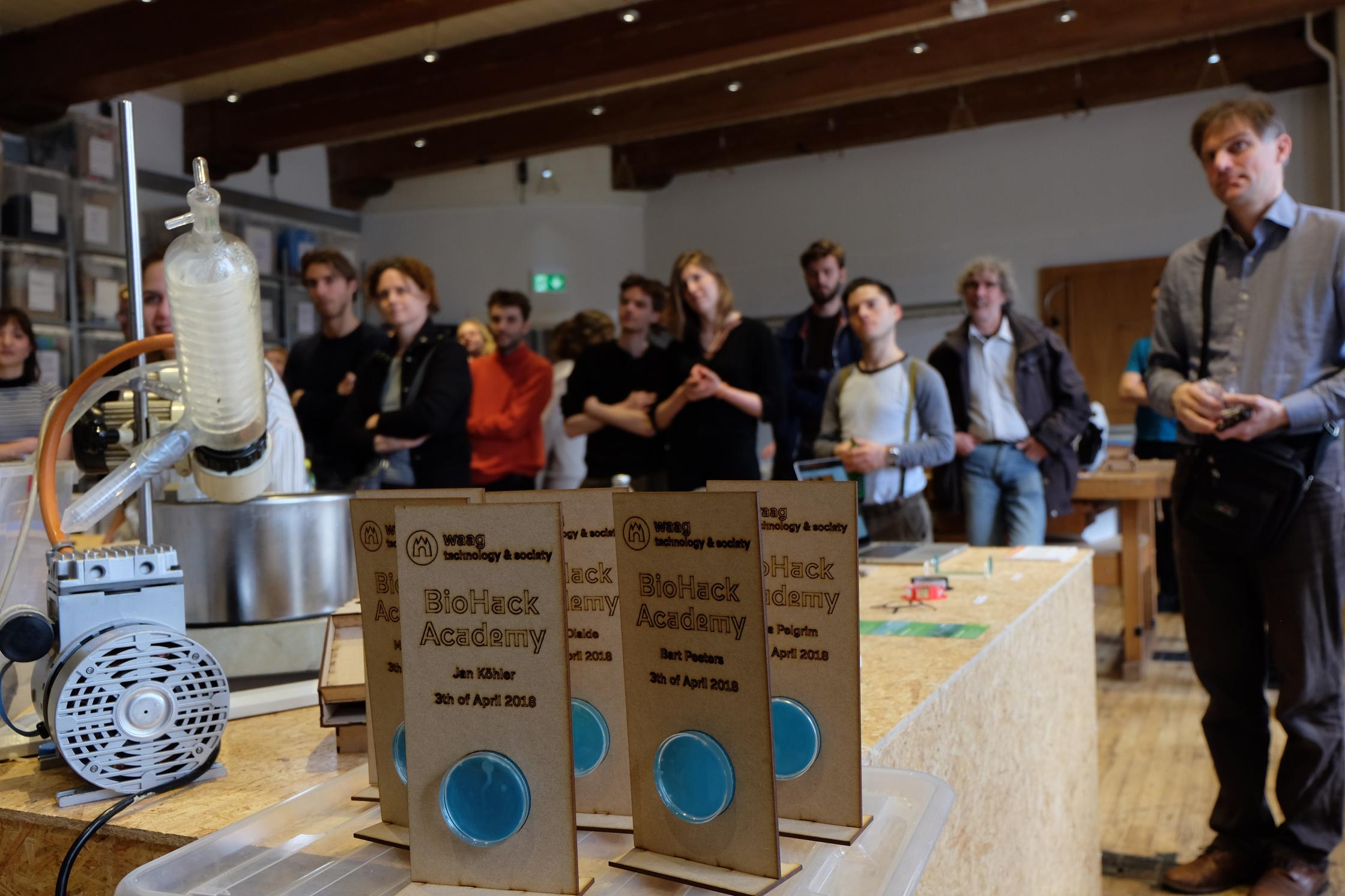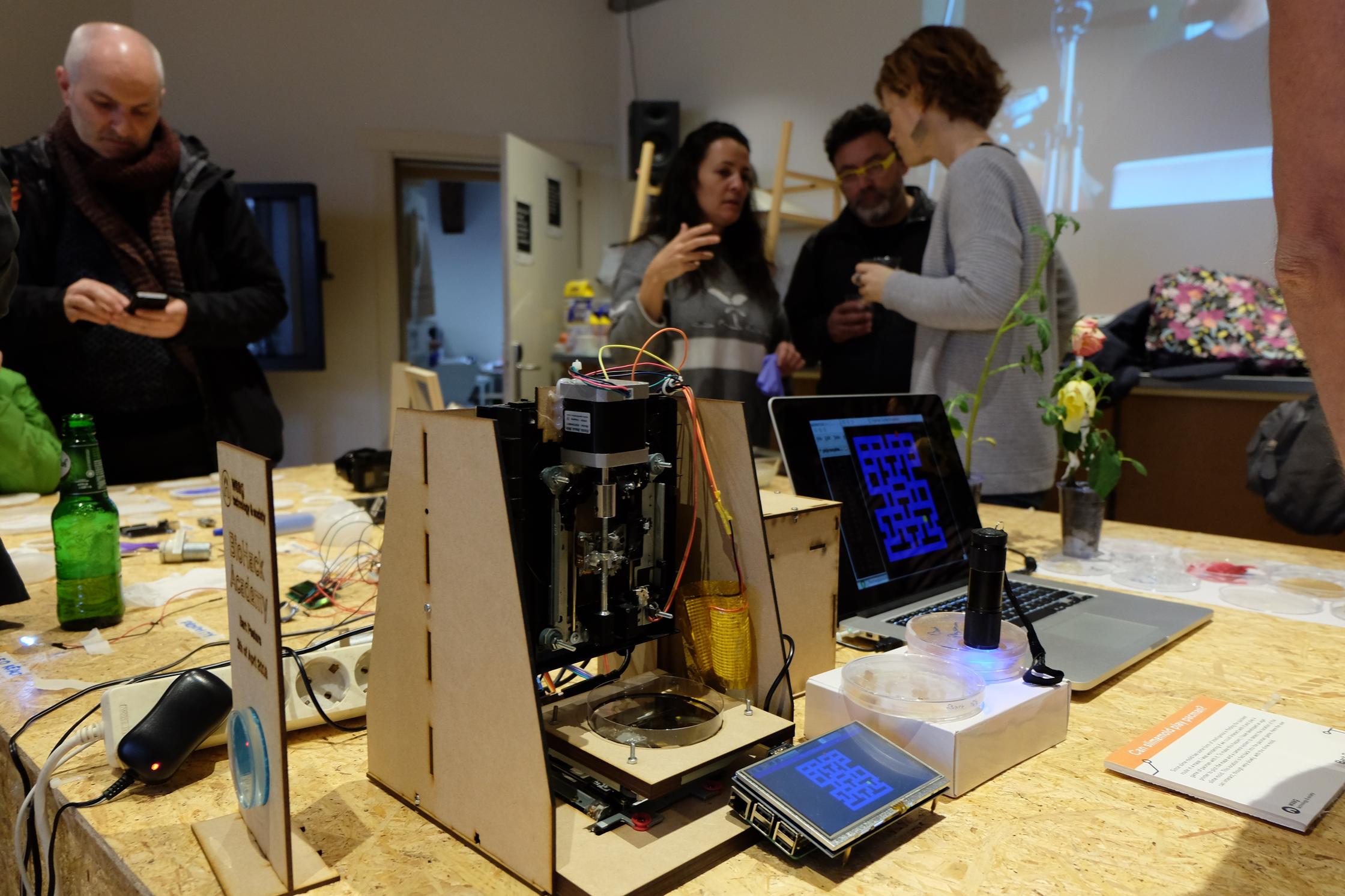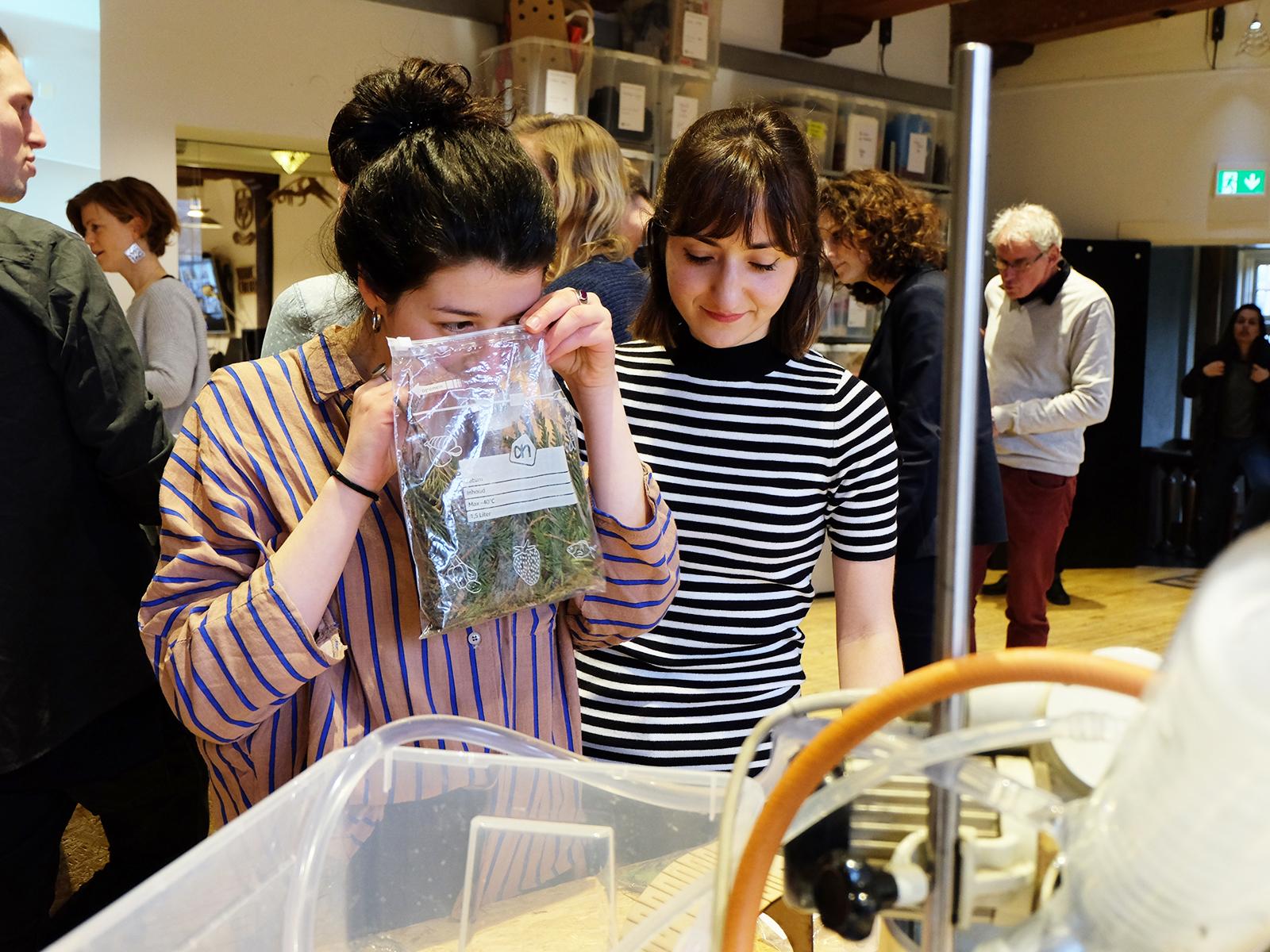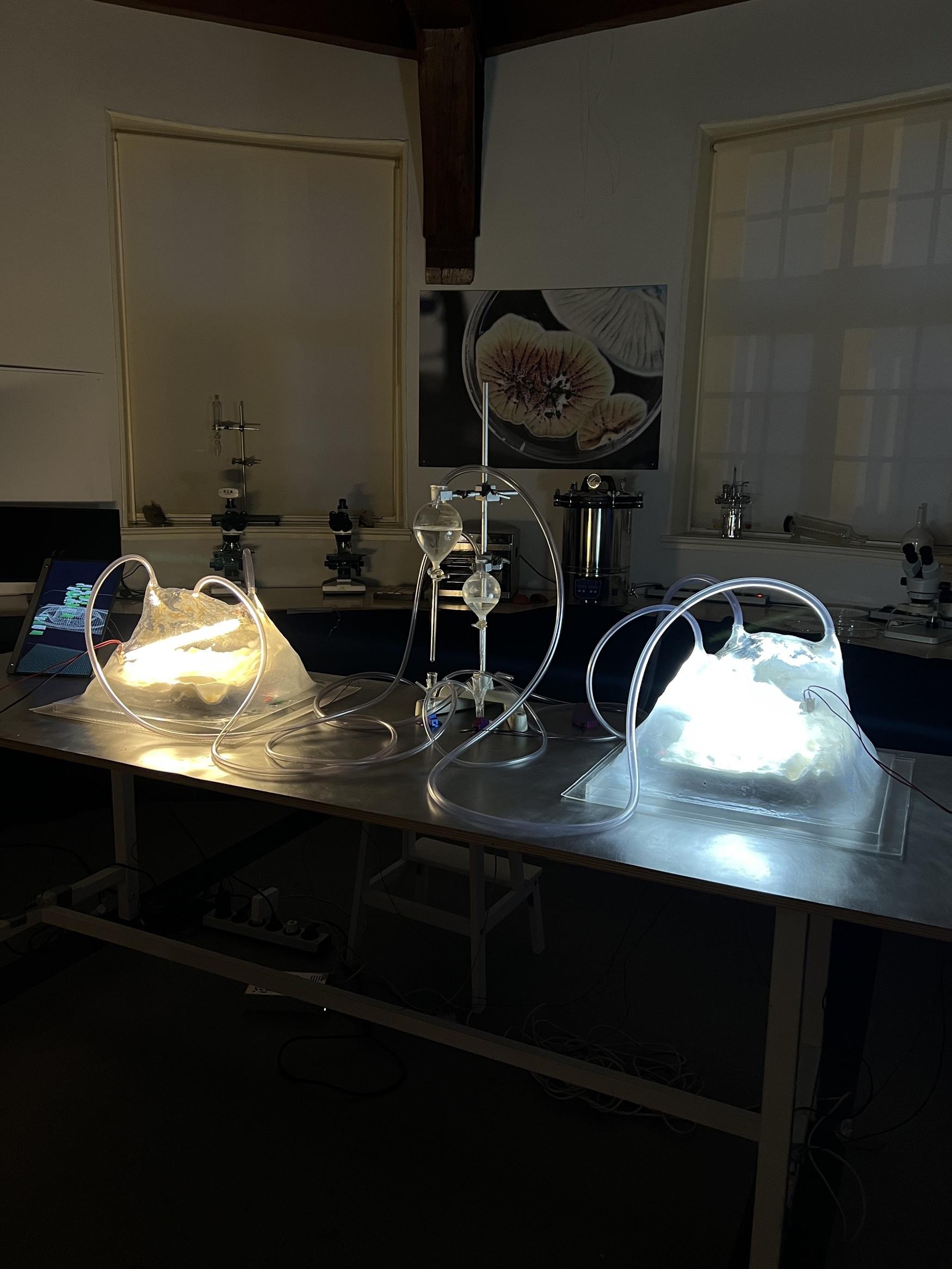The BioHack Academy #5 came to an end with the final presentations and an exhibition showing the work of the latest generation biohackers. Over a period of 10 weeks students learned how to set up their own biolab and developed their own projects. Working with biomaterials, they familiarised themselves with biotechnologies.
The academy was led by Roland van Dierendonck, who gave weekly presentations and also invited several experts on biomaterials or techniques as guest speakers. These presentations were attended by both participants from Waag as well as the partner BioClub in Tokyo, and biohackers in New Mexico. Together with students from this partner in Japan, students concluded the BioHack Academy by presenting the results from their 10-week projects.
Inspired by nature, personal stories, and even space, students worked on creative bio-research and created objects from their ideas during the BioHack Academy, using the newly learned techniques and materials. This resulted in projects such as Invisible identity, trying to capture personal scents, and Fabriel, a bag made with leather-like fabrics created from kombucha and mycelium. Using a livestream, the participants took their turns presenting their work with the participants in Tokyo.
Presentation final projects Waag
8 students from Waag’s BioHack Academy presented their final projects, developed in the Open Wetlab and Fablab Amsterdam. Matthijs de Block worked on non-biological organisms that interact with human behaviour, for example by reacting to human motion and breathing. Jan Köhler developed plant wearables in the form of small terrariums with 3D-printed holders as part of his project What are you planting to wear?. For her project Invisible Identity, Malu Lücking experimented with the sense of smell and how personal scents can be captured, inspired by her friend wearing his grandmother’s bathrobe to remember her by. Laura Olalde explored kombucha genomics using different brewing and growing media. To find out if humans can interact with slime mold, Bart Peeters developed a maze designed to play a game of Pacman with the mold. Anna Pelgrim worked on extracting scents from nature, such as scents from the forest, to use as stress relief in healthcare as part of her Architecture of Cure project. Alexander Rose explored possibilities to bio-hack and influence glacier melting using snow algae. Lastly, Nel Thomas experimented with kombucha to create leather-like fabrics to create a bag named Fabriel.
Later that day, the final projects were presented in an exhibition open to the public. As part of this exhibition, students received their official BioHack Academy Award. With the accumulated skills, students can continue with their experimentation after the Academy finishes. Have a look at the pictures of the BioHack exhibition here.
